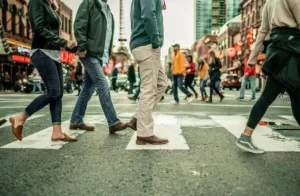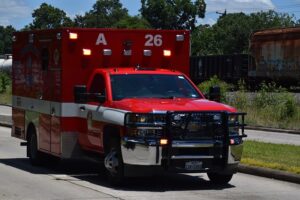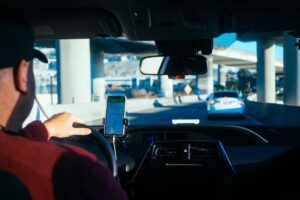
OVERVIEW
- For every 75 minutes passed, one pedestrian was killed on the road in 2020.
- 7,000 pedestrians were killed in 2020.
- There was a 4% increase in pedestrian fatalities in 2020 compared to 2019.
- Almost half of reported car crashes were linked to alcohol consumption.
- Most pedestrian-related accidents happen in urban areas and in the evening.
THE FACTS
Pedestrians are vulnerable on the road. For this reason alone, drivers need to tread carefully as they drive. In fact, the Centers for Disease Control and Prevention (CDC) stated that an average of one pedestrian died every 75 minutes in 2020, accounting for more than 7,000 pedestrians killed on the road. In that same year, 104,000 pedestrians were rushed to the emergency room for non-fatal crash-related injuries. Keep in mind that 2020 is the year when the lockdown started due to the ongoing COVID-19 pandemic, forcing everyone to stay at home and not use their cars.
Despite this, the number of deaths remain alarmingly high, albeit not as high as it used to be in 1975. But this doesn’t mean we should remain complacent. The volume of pedestrian deaths in 2020 may be lower in comparison to the numbers we dealt with 45 years ago, but it’s still a 59 percent increase from the stats we saw in 2009, which was the year that marked an all-time low for pedestrian deaths according to the Insurance Institute for Highway Safety (IIHS). To make matters worse, 2020 has also experienced a 4 percent increase in pedestrian fatalities compared to the preceding year even though fewer cars and people were on the road.
This could be due to the mental stressors brought upon by the uncertainty, fear, and anxiety that came with the COVID-19 virus. Perhaps drivers and pedestrians alike have been engaging in cognitive distractions now more than ever, deterring them from focusing on the road in front of them. Whatever the case, you need to take care of yourself, especially if you’re a pedestrian. In an accident, drivers have the privilege of being shielded from the hard exterior of their vehicles. A pedestrian will not. If a pedestrian gets hit by a car, you are extremely vulnerable to fatal injuries or worse – death.
INCREASED RISK
MOST PEDESTRIAN FATALITIES OCCUR IN URBAN AREAS.
This should come as no surprise, given that an influx of vehicles go in and out of major cities. Los Angeles, for example, is flooded with locals and tourists alike. Since the metropolis has an extreme car use culture, it has become a hotspot for extreme traffic and angry drivers. The latter of which could potentially take their frustrations out towards innocent bystanders, thus increasing the pedestrian’s chance of getting hit by a car. As a matter of fact, a person ends up dead every forty hours in Los Angeles due to the city’s issues with traffic fatality according to the LA Curbed.
MOST PEDESTRIAN FATALITIES OCCUR IN THE EVENING.
The darkness of the night is bound to impede the vision of drivers, which is bad news for those on the road, especially pedestrians. Since pedestrians don’t have anything to protect themselves from intense crashes, they should increase visibility by wearing bright-colored clothes. They should also try to walk on sidewalks with working street lights.
DON’T DRINK ALCOHOL.
There is a lot of discussion surrounding the dangers of drunk driving, but people underestimate how dangerous walking intoxicated can be. According to the CDC, almost half of the crashes in 2019 are linked with alcohol consumption, resulting in pedestrian-related deaths. But contrary to what most people may believe, it actually has a lot more to do with the pedestrians themselves rather than the driver. 33% of these deaths involved pedestrians with a blood alcohol content of 0.08 g/dL or more, whereas only 10% of these accidents involved drunk drivers.
ABOUT OMEGA LAW GROUP
Our awards and excellent testimonials are a result of our ability to empathize and attend to the needs of our clients. Here at Omega Law Group, you will come first. If you or a loved one is afflicted with an accident, reach out to our team. Visit our Contact Us page or call us at 310-526-8383.





